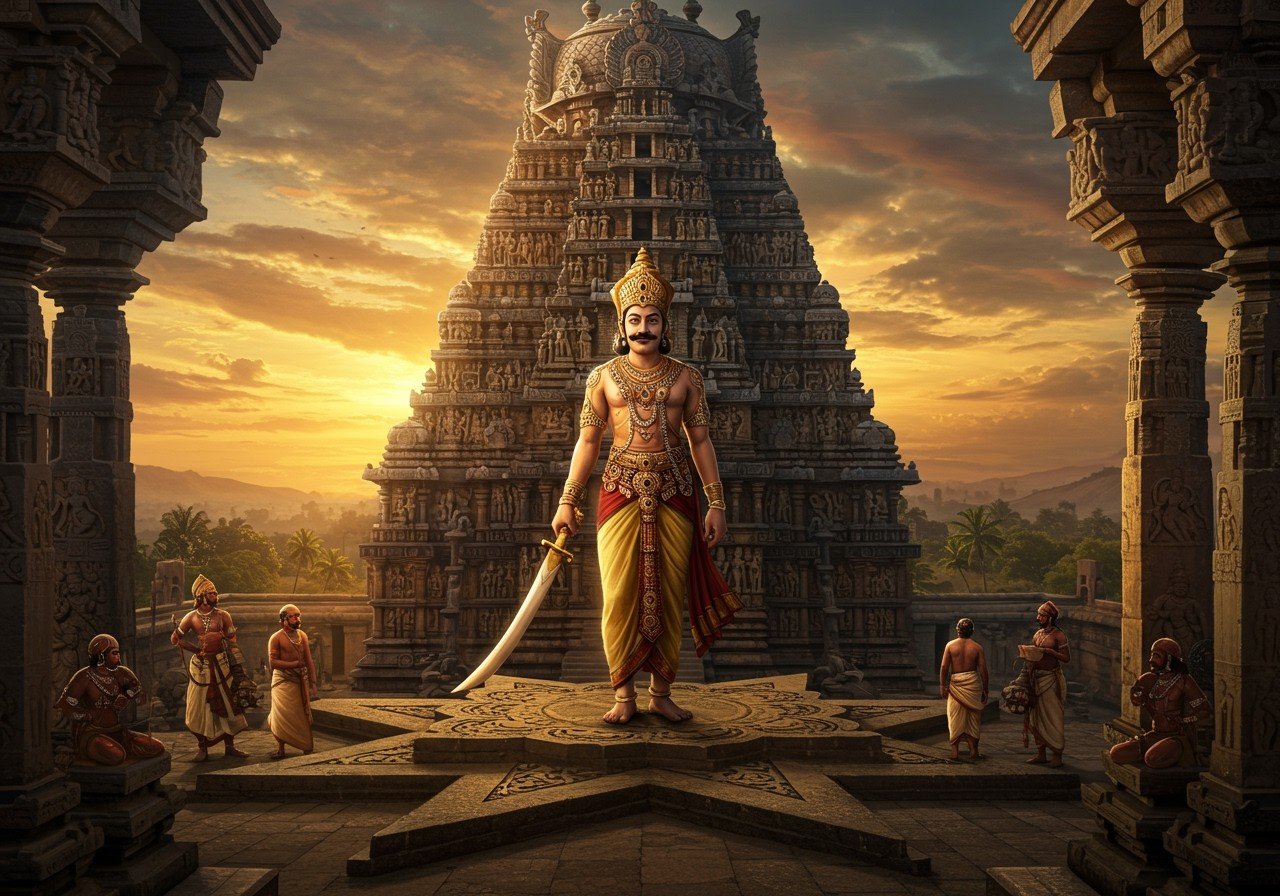
The Hoysala Empire, a prominent South Indian dynasty reigning from approximately 1050 to 1355 CE, left an indelible mark on India’s cultural and architectural landscape. Primarily based in present-day Karnataka, their influence extended to parts of Tamil Nadu and southwestern Telangana. Originating from the Kannadiga region, the Hoysalas initially established their capital at Belur before moving it to Halebidu. This blog post delves into the key figures of this remarkable empire, exploring their reigns and contributions.
Origins and Expansion of the Hoysala Dynasty
The Hoysala dynasty’s origins trace back to the early 11th century, with Nripa Kama II solidifying their position as a powerful force. Initially, they served as feudatories to the Western Chalukyas but gradually asserted their independence and expanded their territories through strategic alliances and military campaigns. The name “Hoysala” is believed to be derived from a legend involving their founder, Sala, and an encounter with a tiger. This period in South Indian history was marked by shifting political dynamics, with regional conflicts and alliances shaping the course of the Hoysala Empire’s rise.
Key Figures and Their Contributions
Vishnuvardhana (1108-1152 CE)
Vishnuvardhana’s reign marks a golden age for the Hoysalas. His military prowess led to significant territorial expansion, including successful campaigns against the Cholas. He is also known for his religious conversion from Jainism to Vaishnavism under the influence of Ramanujacharya. This shift had a profound impact on the religious landscape of the kingdom. Vishnuvardhana’s patronage of art and architecture resulted in the construction of magnificent temples like the Chennakesava Temple at Belur and the Hoysaleswara Temple at Halebidu. These architectural marvels stand as testaments to the Hoysala’s sophisticated craftsmanship and artistic vision.
For those seeking to connect with the divine, poojn.in offers a wide selection of sacred items. Explore our collection of Shiva Lingams and Adiyogi statues, handcrafted with reverence and devotion.
Veera Ballala II (1173-1220 CE)
Veera Ballala II continued the Hoysala tradition of military success, securing victories against the Kalachuris, Pandyas, and Cholas. He strengthened the kingdom’s position through strategic alliances, often cemented by diplomatic marriages. His reign also saw a focus on infrastructure development, with the construction of temples and the flourishing of urban centers. Veera Ballala II’s support for literature led to significant works in Kannada, enriching the cultural heritage of the region. Despite his achievements, his later years were marked by internal rebellions and external threats.
Enhance your spiritual practice with authentic Bel malas and Tulsi malas available at poojn.in. These sacred beads are perfect for meditation and prayer.
Veera Ballala III (1292-1343 CE)
Veera Ballala III faced the formidable challenge of defending the Hoysala kingdom against the rising power of the Delhi Sultanate. He forged alliances with other South Indian kingdoms to resist these invasions. Despite facing economic pressures, he maintained a substantial army and continued the Hoysala’s architectural legacy by completing several unfinished temple projects. Veera Ballala III’s reign represents the final chapter of the Hoysala Empire, marked by both resilience and the eventual decline in the face of external forces.
Bring the divine presence into your home with beautifully crafted Laddu Gopal and Radha Krishna idols from poojn.in. We offer a wide variety of sizes and materials to suit your needs.
FAQs on the Hoysala Dynasty
Who were some of the most influential Hoysala rulers? Some of the most influential Hoysala rulers include Vishnuvardhana, Veera Ballala II, and Veera Ballala III. Each of these rulers played a significant role in shaping the empire’s political, religious, and cultural landscape.
What is the historical significance of the Hoysala temples? The Hoysala temples are renowned for their intricate carvings, unique architectural style, and the depiction of scenes from Hindu epics and mythology. They stand as a testament to the Hoysala’s artistic and engineering prowess, representing a high point in South Indian temple architecture.
What led to the decline of the Hoysala Empire? The decline of the Hoysala Empire can be attributed to a combination of factors, including repeated invasions by the Delhi Sultanate, internal conflicts, and economic pressures. The empire’s gradual weakening paved the way for the rise of the Vijayanagara Empire in the region.
Conclusion
The Hoysala Dynasty’s legacy endures through its magnificent temples, rich cultural contributions, and the stories of its remarkable rulers. Their reign, spanning from 1050 to 1355 CE, represents a significant chapter in South Indian history, leaving an enduring impact on the region’s cultural heritage and architectural landscape.


